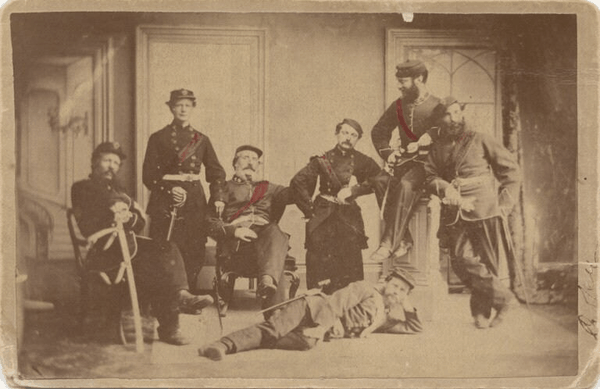In the years immediately following the Civil War, the United States went through a vast amount of changes. As the country was rebuilding itself and its people were recovering from war, the United States showed itself as a potential major player in diplomatic relations between England and Ireland during a time of great hostility between the two.
The Great Potato Famine caused great suffering and starvation among the Irish people. The British, who occupied Ireland at the time, did nothing to ease their pain. Many Irish emigrated to America to escape the famine and British rule; when they got here, they experienced second-class citizen status.

ADVERTISEMENT - CONTINUE READING BELOW
The tense relationship between the British and the Irish affected American Irish and Irish immigrants in many different ways. Most just wanted to ignore it: they left Ireland for a reason, and they wanted to attempt to live in peace in their new home. Their lives were hard enough without worrying about what was happening at home. Others were angry: they still felt pride in their Irish heritage, and the British treatment of their homeland hurt them. They wanted to take action, but what could they do from so far away?
Many of these angry Irishmen belonged to the Fenian Brotherhood, an Irish international Republican terrorist organization with branches in Ireland and the United States. The Brotherhood dedicated itself to freeing their mother country from British dominance, but they also had peaceful chapters that gave humanitarian aid to Ireland. The American branch of the Brotherhood did not take orders from the Irish branch, but they supported Ireland through their actions.
They searched for ideas to force the British to grant Ireland its independence. Since they were so far away, they couldn’t force the British to evacuate their mother country, but the Brotherhood came up with a brilliant idea to force Britain’s hand that was much closer to home. Canada was a valuable British possession at the time, located to the north of the United States. The Fenians decided that they would invade and conquer as much of Canada as they could and hold it hostage until the British agreed to leave Ireland. Once Ireland was returned to the Irish, the Fenians would return Canada to the British.
To prepare for their invasion of Canada, the Fenians launched a test-run invasion of New Brunswick with about 700 men in April 1866. After all, none of them had invaded a country before. They wanted to know how easy or how hard it would be. They successfully invaded the province, but it was very brief. They scattered just as quickly as they had arrived when the British warships showed up. The pre-invasion attack was a complete failure, but the Fenians were not disappointed. They continued with their plans and launched their invasion of Canada.

ADVERTISEMENT - CONTINUE READING BELOW
On June 1, 1866, a crew of men loyal to the Fenian cause damaged the USS Michigan, the gunboat safeguarding the intersection of the Niagara River between Lake Erie and Lake Ontario, which allowed the Fenian Brotherhood to cross into Canada. The Fenian force was small but lethal: there were only approximately 1,000-1,500 men who invaded Canada, but they were well-armed, and many of them had served in combat before. Since their numbers were so small, the Irish ensured that they brought massive artillery with them.
The weapons they carried weighed down the boats, so they had to dump some of them in the Niagara River during the invasion. The American Civil War had ended only the year before, so they were highly trained in marksmanship and strategic military exercises. Eventually, the U.S. Navy repaired the USS Michigan and halted the remaining invasion, separating the Fenians from their supplies; those who made it across the river prepared for battle.

